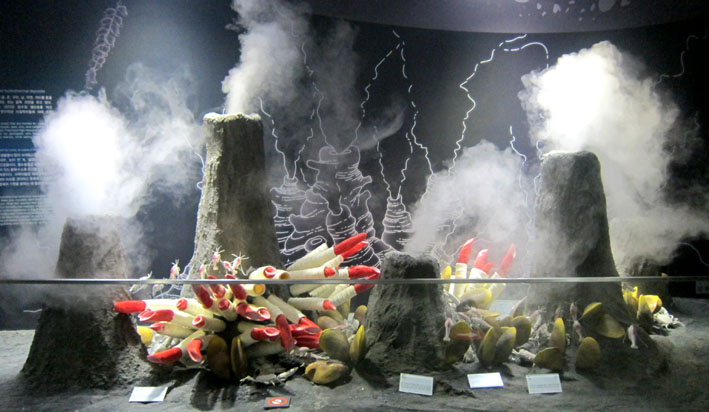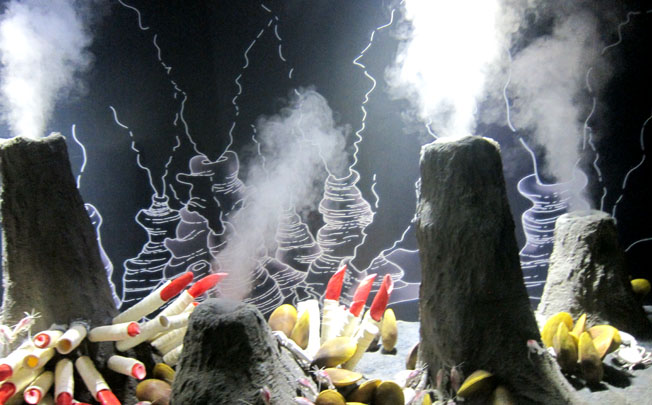一枚の特選フォト⌈海 & 船⌋
One Selected Photo "Oceans & Ships"
Back to: Top Page |
深海底熱水鉱床のジオラマ [釜山/国立海洋博物館]

|
画像は、韓国・釜山の国立海洋博物館に展示される深海底の熱水鉱床のジオラマである。鉱床に蝟集するチューブワーム、
深海エビなどの生物の模型縮尺は、チムニー (ホワイト・スモーカー) に比してかなり拡大されているが、
これは一般見学者にとって鉱床に蝟集する生物やその状況をイメージしやすく、また視覚的によく理解できるようにとの配慮からであろう。
見る人々を未知の深海フロンティアへと誘いワクワクさせる展示となっている。 説明パネルには次のように記される。
Underwater hydrothermal deposits are metal lumps that are formed by underwater volcanic activities, which contain gold, silver, copper, lead, zinc, and cadmium. They have the form of a conical stalagmite or a chimney. They have high resources value. They were first discovered at 2,640m underwater by geologists who were studying underwater volcanic activities near Galápagos Islands, while sailing through in the Alvin, a submersible, in 1977. Many living organisms live a lot more around hydrothermal vents than around any other places. They include tube worms, bivalves, deep-sea mussels, bent-back shrimps, blind crabs, dahlia-shaped jellyfish, and various other fish species that swim around them. The reason for this is that there are sulfur bacteria that maintain the ecosystem by creating organic matter from the hydrogen sulfide contained in the thermal water. Scientists speculate that the environment of underwater hydrothermal deposits would be very similar to that of when living organisms were first created on earth. So, they believe that underwater hydrothermal deposits will reveal important information about the entire pattern of the world's marine organisms and the origin of all the living organisms on earth.
[画像撮影: 2016.9.15 国立海洋博物館/釜山にて][拡大画像: x27380.jpg] |
 2. [拡大画像: x27381.jpg: 説明書き] |
Back to: Top Page |